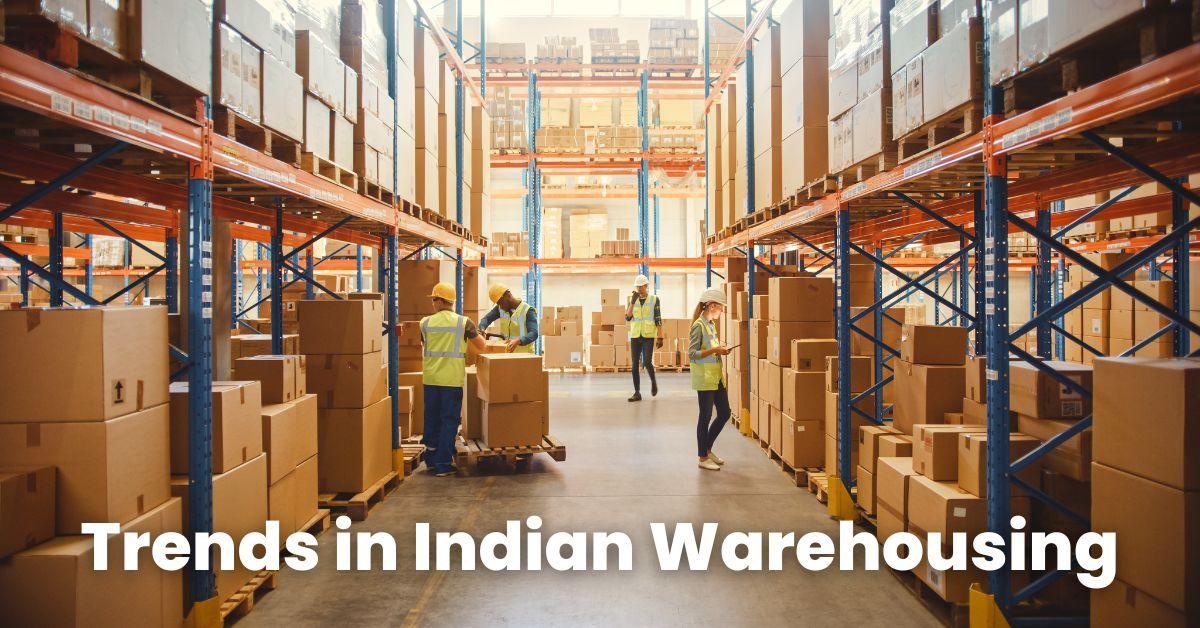Trends in Indian warehousing

The logistics sector is growing steadily at a rate of 10–12% YoY, contributing 14.4% to India's GDP and employing more than 20 million people. Warehousing sector in India has seen a significant transformation, mainly driven by the post pandemic surge in online purchase, and a shift in consumer’s buying pattern. Changing business needs and altering consumer behaviour have led to a series of technological developments and have also led to newer and flexible business formats, accommodating several factors around cost and operations.
Here is a look at some of the current trends in warehousing industry:
Increased Demand for Modern Warehousing Facilities: With the growth of e-commerce and organized retail in India, there has been a surge in demand for modern, technologically advanced warehousing facilities. Companies are increasingly seeking warehouses equipped with features such as automation, robotics, RFID (Radio-Frequency Identification), and IoT (Internet of Things) for efficient inventory management and order fulfillment.
Expansion of 3PL (Third-Party Logistics) and 4PL Services: Many businesses are outsourcing their warehousing and distribution needs to specialized 3PL and 4PL service providers to streamline operations and focus on core competencies. 3PL providers are offering a wide range of value-added services, including inventory management, transportation, order processing, and reverse logistics.
Adoption of Sustainable Practices:There is a growing emphasis on sustainability and environmental responsibility in the warehousing sector. Companies are implementing eco-friendly practices such as energy-efficient lighting, waste reduction, recycling, and green building certifications (e.g., LEED certification) to minimize their carbon footprint.
Rise of Multi-Modal Logistics Parks: Multi-modal logistics parks, integrating various transportation modes (road,rail, air, and sea), are gaining traction in India. These parks offer seamless connectivity and facilitate efficient movement of goods across different regions, catering to the increasing demand for intermodal transportation.
Emergence of Data-Driven Decision Making:Warehousing companies are leveraging data analytics and technology to optimize warehouse operations and enhance supply chain visibility. Advanced analytics tools are being used to analyze historical data, forecast demand, optimize inventory levels, and improve overall warehouse efficiency.
Focus on Last-Mile Delivery Solutions:Last-mile delivery has become a critical aspect of the supply chain, especially in urban areas with high population density. Warehousing companies are investing in last-mile delivery solutions such as urban fulfillment centers, micro-warehouses, and innovative delivery models (e.g., drones, autonomous vehicles) to meet the growing demand for faster and more reliable deliveries.
Government Initiatives Driving Growth:Government initiatives such as the "Make in India" campaign, GST (Goods and Services Tax) implementation, and infrastructure development projects (e.g., Dedicated Freight Corridors) are contributing to the growth of the organized warehousing sector. Policies promoting ease of doing business and investment in logistics infrastructure are attracting both domestic and foreign investment in the warehousing space.
These trends reflect the evolving dynamics of the Indian organized warehousing sector, driven by technological advancements, changing consumer behavior, and supportive government policies. Organizations operating in this sector need to adapt to these trends to stay competitive and capitalize on emerging opportunities
Contact Us



.png)





.jpg)
No comments
Your email address cannot be published. Required fields are marked*